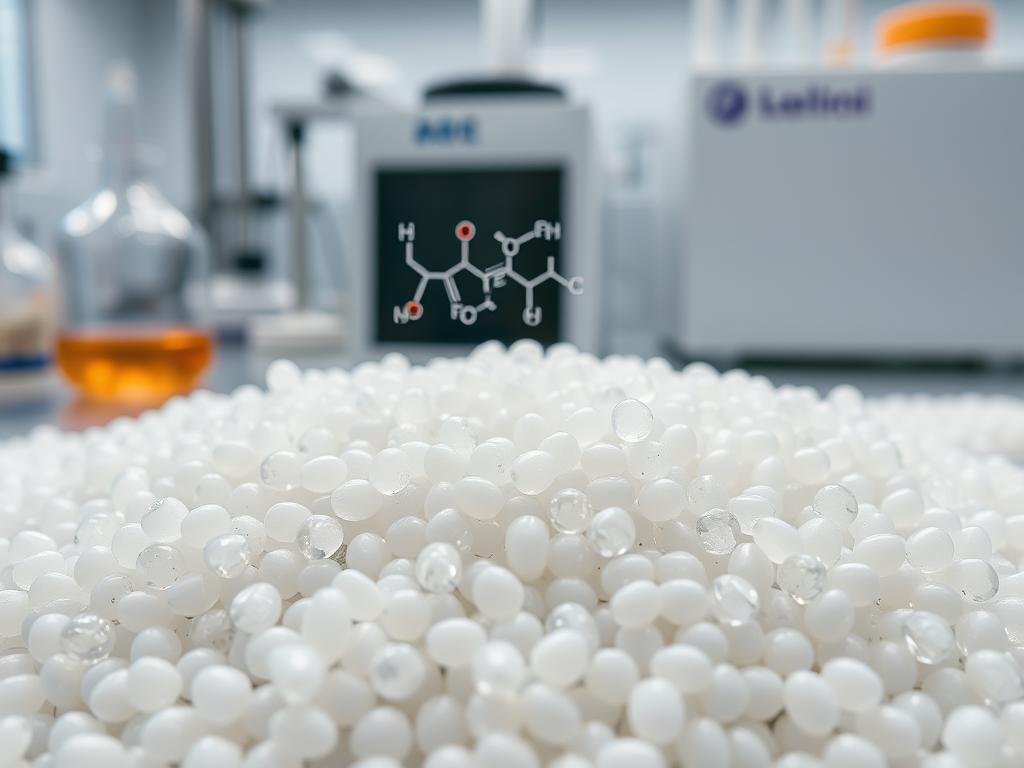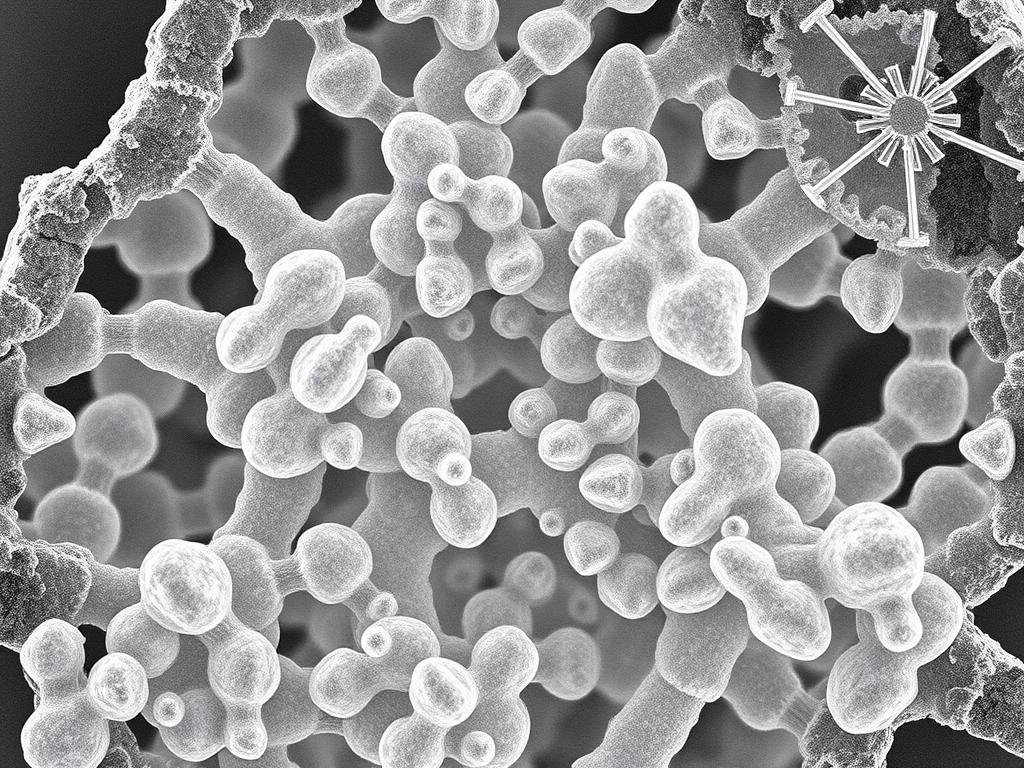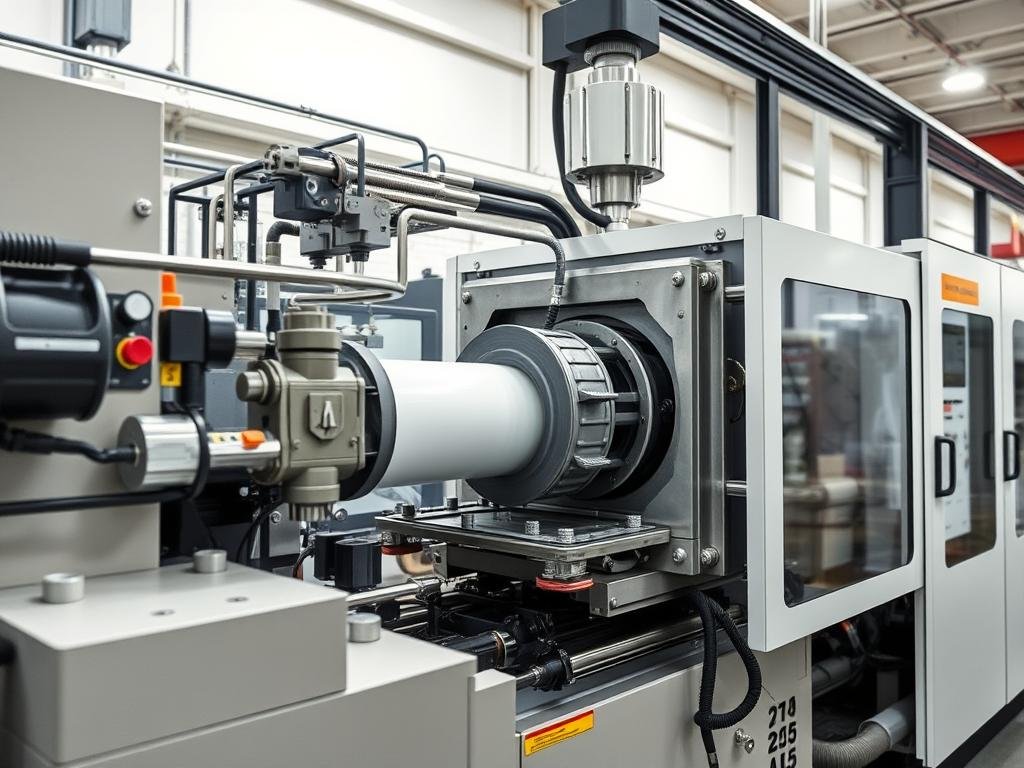Understanding the melting point of polypropylene is crucial for various industrial applications. This thermoplastic polymer is known for its durability and resistance to heat, making it a popular choice for manufacturers.
The temperature at which polypropylene melts typically ranges between 130°C to 171°C (266°F to 340°F). This relatively high melting point allows polypropylene to maintain its strength and rigidity at elevated temperatures, making it suitable for a range of industrial uses.
As we explore the properties and applications of polypropylene, it becomes clear that its thermal properties play a significant role in material selection for temperature-resistant applications.
Understanding Polypropylene and Its Properties
To understand polypropylene, we first need to explore its fundamental properties. Polypropylene is a thermoplastic polymer belonging to the polyolefin family, known for its versatility and wide range of applications.
What is Polypropylene?
Polypropylene (PP) is produced through the polymerization of propylene monomers. It is characterized by its light weight, high strength, and good resistance to chemicals and heat. PP appears as white granules, is odorless, and non-toxic. Its molecular structure is similar to polyethylene but with a methyl group attached to alternate carbon atoms, contributing to its unique properties.
Key Characteristics of Polypropylene
Polypropylene has several key characteristics that make it a valuable material in various industries. It has good tensile strength and rigidity, although its impact strength is relatively poor, especially at low temperatures. PP is known for its low water absorption rate (0.01% after 24 hours), which contributes to its dimensional stability and electrical insulation properties. Additionally, its low density (0.90-0.91 g/cm³) makes it one of the lightest commercial plastics, offering significant weight advantages. However, it has limitations such as poor UV resistance and limited heat resistance compared to engineering thermoplastics.

The Polypropylene Melting Point Range
Polypropylene’s melting behavior is a critical aspect of its application in various industries. The melting point of polypropylene is not a single value but rather a range, typically between 130°C to 171°C (266°F to 340°F).
Standard Melting Temperature Range
The standard melting temperature range for polypropylene is generally considered to be between 160°C to 170°C (320°F to 338°F). This range can vary based on the specific grade of polypropylene and its crystalline structure. Differential scanning calorimetry (DSC) is a common technique used to determine the melting characteristics of polypropylene.
| Property | Value | Unit |
|---|---|---|
| Melting Point Range | 130-171 | °C |
| Typical Melting Range | 160-170 | °C |
| Sterilization Temperature | Above 100 | °C |
How Melting Point Differs from Glass Transition Temperature
The melting point and glass transition temperature are two distinct thermal properties. While the melting point is the temperature at which polypropylene transitions from a solid to a liquid, the glass transition temperature is the point at which the polymer’s amorphous regions become less rigid. For polypropylene, the glass transition temperature is typically around 0°C to 10°C (32°F to 50°F), much lower than its melting point.
Factors Affecting Polypropylene’s Melting Point
The thermal properties of polypropylene, particularly its melting point, are affected by multiple factors. Understanding these factors is crucial for optimizing its performance in various applications.
Molecular Weight and Structure
The molecular weight and structure of polypropylene play a significant role in determining its melting point. Polypropylene with a higher molecular weight generally has a higher melting point due to stronger intermolecular forces. The spatial arrangement of methyl groups in the polymer chain, whether isotactic, syndiotactic, or atactic, also influences its melting behavior and crystallization potential.
- Higher molecular weight polypropylene typically exhibits higher melting temperatures.
- The molecular structure affects the polymer’s crystallization potential and thermal properties.
Crystallinity and Its Impact
The degree of crystallinity in polypropylene directly impacts its melting point. More highly crystalline grades require higher temperatures to melt due to their ordered molecular structure. Nucleating agents can be used to control crystallization, thereby influencing both the melting point and the overall thermal performance of polypropylene products.

Effect of Additives and Fillers
Polypropylene is often used with various additives and fillers to alter its properties. Certain stabilizers can raise the melting point, making it more suitable for high-temperature applications. Fillers and reinforcements, such as talc, calcium carbonate, and glass fibers, can modify the thermal behavior of polypropylene compounds, potentially raising or lowering the effective melting point.
- Additives like antioxidants and UV stabilizers can impact polypropylene’s melting characteristics.
- Copolymerization with other monomers, such as ethylene, can adjust polypropylene’s melting point for specific applications.
Processing Polypropylene at Optimal Temperatures
Achieving optimal results when processing polypropylene requires a deep understanding of its temperature requirements. When molding or extruding polypropylene, it’s essential to set equipment to a temperature above its melting point, typically between 160°C to 170°C (320°F to 338°F), for optimal flow and quality.
Injection Molding Temperature Considerations

For injection molding, precise temperature control is crucial. The barrel temperature profile and mold temperature settings significantly affect the flow characteristics and final part properties. Adjusting these parameters according to the specific grade of polypropylene being used is vital for achieving the desired product quality.
Extrusion and Other Processing Methods
In extrusion processing, maintaining the right temperature profile across different zones of the extruder and die temperature is critical. Other processing methods like blow molding, thermoforming, and rotational molding also require specific temperature guidelines. Proper cooling rates are essential to ensure the material achieves the desired properties.
By understanding the optimal processing temperatures for polypropylene and adjusting processing conditions accordingly, manufacturers can ensure high-quality products with desired mechanical properties.
Comparing Polypropylene’s Melting Point to Other Polymers
When selecting materials for a project, comparing the melting points of polypropylene and other polymers is essential. This comparison helps in understanding the suitability of these materials for various applications, especially those involving elevated temperatures.
Polypropylene vs. Polyethylene
Polypropylene (PP) has a melting point of about 160 to 170 degrees Celsius, whereas High-Density Polyethylene (HDPE) melts at around 130 to 140 degrees Celsius, and Low-Density Polyethylene (LDPE) at 105 to 115 degrees Celsius. The presence of a methyl group in polypropylene’s molecular structure contributes to its higher melting point compared to polyethylene.
This difference in melting points translates to practical differences in application suitability. For instance, polypropylene is more suitable for applications that require exposure to higher temperatures, although it’s not considered highly temperature-resistant.
Polypropylene vs. Higher Temperature Polymers
Compared to higher-temperature engineering thermoplastics like nylon (PA), polyester (PET), polycarbonate (PC), and polyetheretherketone (PEEK), polypropylene has a relatively lower melting point. These differences significantly affect processing requirements, equipment needs, and energy consumption during manufacturing.
The table below provides a comparison of the melting points of common thermoplastics:
| Polymer | Melting Point (°C) |
|---|---|
| Polypropylene (PP) | 160-170 |
| High-Density Polyethylene (HDPE) | 130-140 |
| Low-Density Polyethylene (LDPE) | 105-115 |
| Nylon (PA) | 220-260 |
| Polyetheretherketone (PEEK) | 343 |
Understanding these differences is crucial for material selection and processing. The relative melting points influence not only the manufacturing process but also the suitability of the final product for specific applications.
Applications Leveraging Polypropylene’s Thermal Properties
With its distinct melting point and heat resistance, polypropylene is utilized in numerous high-value applications across multiple industries. Its versatility stems from its ability to withstand various temperatures, making it suitable for a wide range of uses.
Automotive and Industrial Applications
Polypropylene is extensively used in the automotive industry for manufacturing components such as bumpers, dashboards, door panels, and headlight housings. Its light weight, high strength, and chemical resistance make it an ideal material for these applications.

Food Packaging and Consumer Products
In food packaging, polypropylene’s heat resistance allows for hot-fill processes, microwave use, and hot water sterilization while maintaining product integrity and safety. It’s used for making food packaging bags, cling film, beverage bottles, and food containers.
Medical and High-Performance Applications
Polypropylene is used in medical devices such as syringes, IV bags, and medicine bottles due to its non-toxicity, heat resistance, and chemical stability. Its ability to withstand sterilization temperatures without degradation is critical in these applications.
The diverse applications of polypropylene highlight its value as a versatile and cost-effective material. Its thermal properties contribute significantly to its performance and durability in various industries.
Conclusion: Practical Implications of Polypropylene’s Melting Point
The thermal stability of polypropylene, characterized by its melting point, is a key factor in its selection for various industrial applications. With a melting range of 130°C to 171°C, polypropylene offers flexibility for diverse uses while requiring precise temperature control during manufacturing.
Understanding polypropylene’s melting behavior enables manufacturers to optimize processing parameters, improve product quality, and reduce production costs. Its balance between thermal performance and cost-effectiveness positions polypropylene as an ideal material for applications requiring moderate heat resistance.
As industries continue to evolve, advancements in polypropylene development, including copolymers and composites, are expected to enhance its thermal properties. By considering polypropylene’s melting point, engineers and designers can develop new products that meet specific thermal requirements, driving its continued adoption across various sectors.
